Lonnie Ostrow's Blog, page 2
December 15, 2016
Unavoidable Landmark Albums
 Jagged Little Pill by Alanis Morissette
Jagged Little Pill by Alanis MorissetteIt was the summer of 1995 and the voice of Alanis Morrissette was everywhere. A little-known Canadian female singer had emerged from total obscurity to become the reigning queen of the FM airwaves, MTV and VH1. Everywhere you went, another angst-filled anthem blared from radios and CD players. My office receptionists, Rachel and Toby, knew every word. Ironic. Hand In Pocket. Head Over Feet. You Learn. If you lived through that time… well, you oughta know.
Jagged Little Pill by Alanis Morrissette was undeniably one of the most successful mainstream debut albums in pop music history. The CD sported a quartet of top-ten singles, and a handful of other radio hits. Technically, Ms. Morrissette had recorded a trio of teenage pop albums released only in her native Canada. But Jagged was her first adult effort, and her debut international release. It became one of the bestselling recordings of the 1990s.
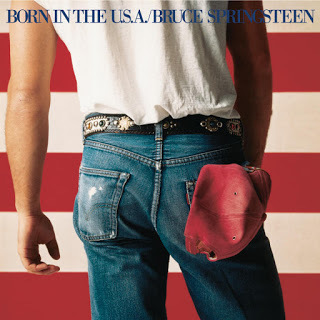 Other artists have scored more hit songs from a single album through the decades. Born In The USA by Bruce Springsteen, Rhythm Nation by Janet Jackson and Thriller by Michael Jackson have all spawned seven top-10 hits. George Michael’s Faithalbum generated six hit songs, as did Katy Perry’s recent smash, Teenage Dream. And six disparate artists have enjoyed five hit songs from a single album including Madonna (True Blue), Paula Abdul (Forever Your Girl) Lionel Ritchie (Can’t Slow Down), Whitney Houston (Whitney) and Usher (Confessions). However, from this impressive list, only Paula Abdul’s album was a debut effort.
Other artists have scored more hit songs from a single album through the decades. Born In The USA by Bruce Springsteen, Rhythm Nation by Janet Jackson and Thriller by Michael Jackson have all spawned seven top-10 hits. George Michael’s Faithalbum generated six hit songs, as did Katy Perry’s recent smash, Teenage Dream. And six disparate artists have enjoyed five hit songs from a single album including Madonna (True Blue), Paula Abdul (Forever Your Girl) Lionel Ritchie (Can’t Slow Down), Whitney Houston (Whitney) and Usher (Confessions). However, from this impressive list, only Paula Abdul’s album was a debut effort. 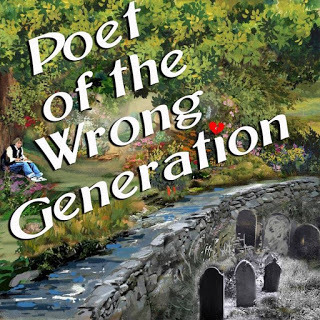 Fictional Album Cover for Poet Of The Wrong Generation In my novel, Poet Of The Wrong Generation, my protagonist, Johnny Elias emerges on the pop music scene with a debut album that generates a remarkable four (4) hit singles, plus another that is released simultaneously on a film soundtrack. His album - which also happens to be the book’s title – is released in 1992, during a serious dearth in quality of popular music. An era when rap, grunge, boy-bands and computerized instrumentation ruled the airwaves.
Fictional Album Cover for Poet Of The Wrong Generation In my novel, Poet Of The Wrong Generation, my protagonist, Johnny Elias emerges on the pop music scene with a debut album that generates a remarkable four (4) hit singles, plus another that is released simultaneously on a film soundtrack. His album - which also happens to be the book’s title – is released in 1992, during a serious dearth in quality of popular music. An era when rap, grunge, boy-bands and computerized instrumentation ruled the airwaves. Unlike the majority of the popular artists from the early ‘90s, Johnny Elias recorded an album of lyrically driven songs. Songs of heartbreak, alienation and social consciousness. A folky throwback artist – so unlikely successful- in perhaps the most shallow era for quality songwriting in pop music history. The wide range of musical styles and topical themes help our fictional pop-star to garner radio airplay on a variety of stations, turning him into an overnight success.
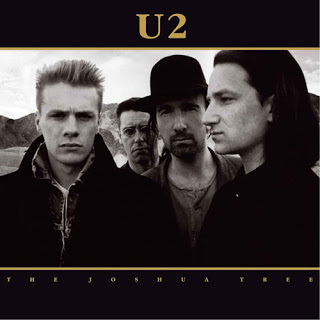 Throughout the pop music era, I can recall a few other examples of extraordinary albums that have dominated the airwaves for an extended period. U2’s The Joshua Tree (1987) won the Grammy for best album, and lifted the Irish rockers from stars to superstardom. It featured a trio of top-ten singles including With Or Without You. Their songs and videos were everywhere.
Throughout the pop music era, I can recall a few other examples of extraordinary albums that have dominated the airwaves for an extended period. U2’s The Joshua Tree (1987) won the Grammy for best album, and lifted the Irish rockers from stars to superstardom. It featured a trio of top-ten singles including With Or Without You. Their songs and videos were everywhere.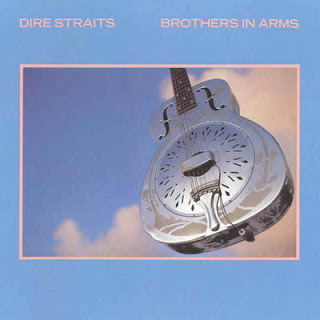 In 1985, British Rockers, Dire Straits were the darlings of MTV and the FM airwaves with their monster album, Brother’s In Arms. Three hit singles cracked the top-20, including saturation video play for the #1 chart-topper, Money For Nothing. They even managed to make red headbands stylish for a summer.
In 1985, British Rockers, Dire Straits were the darlings of MTV and the FM airwaves with their monster album, Brother’s In Arms. Three hit singles cracked the top-20, including saturation video play for the #1 chart-topper, Money For Nothing. They even managed to make red headbands stylish for a summer.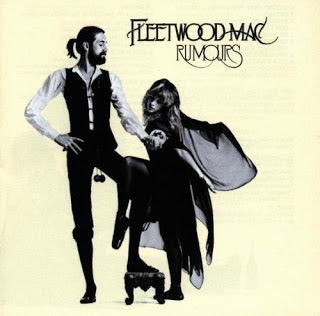 The summer of 1977 was dominated by a pair of landmark albums. Rumors, the chart-topping album by Fleetwood Mac was a radio juggernaut. Four hit singles ruled the airwaves that season, including the # 1 smash, Dreams. The popular film, Saturday Night Fever, was powered by an unforgettable disco soundtrack, written primarily by The Bee Gees. The album held the # 1 position on the Billboard charts for 24 consecutive weeks, and produced an unprecedented FIVE #1 singles including Stayin Alive, Night Fever and How Deep Is Your Love. It also included hits by other artists including Tavares and KC and the Sunshine Band.
The summer of 1977 was dominated by a pair of landmark albums. Rumors, the chart-topping album by Fleetwood Mac was a radio juggernaut. Four hit singles ruled the airwaves that season, including the # 1 smash, Dreams. The popular film, Saturday Night Fever, was powered by an unforgettable disco soundtrack, written primarily by The Bee Gees. The album held the # 1 position on the Billboard charts for 24 consecutive weeks, and produced an unprecedented FIVE #1 singles including Stayin Alive, Night Fever and How Deep Is Your Love. It also included hits by other artists including Tavares and KC and the Sunshine Band.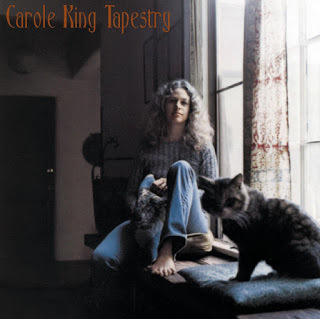 AM radio was still dominant in the early 1970s. And no album epitomized the early 70s AM sound than Carole King’s Tapestry. Although Ms. King’s songwriting skills had yielded hits for other artists throughout the ‘60s, it was her landmark solo album that made her a household name. The album generated
AM radio was still dominant in the early 1970s. And no album epitomized the early 70s AM sound than Carole King’s Tapestry. Although Ms. King’s songwriting skills had yielded hits for other artists throughout the ‘60s, it was her landmark solo album that made her a household name. The album generated
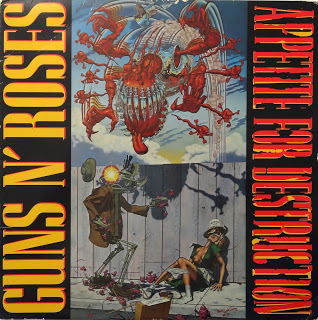 Oh, and as for the most successful debut album in pop-music history. Well, that distinction belongs to the rock band, Guns N Roses and their 1987 release, Appetite For Destruction. That record yielded seven singles (three of them top-40 hits) including the #1 song, Sweet Child 'O Mine. It remains the bestselling album for Geffen Records, and one of the bestselling titles of the 1980s.
Oh, and as for the most successful debut album in pop-music history. Well, that distinction belongs to the rock band, Guns N Roses and their 1987 release, Appetite For Destruction. That record yielded seven singles (three of them top-40 hits) including the #1 song, Sweet Child 'O Mine. It remains the bestselling album for Geffen Records, and one of the bestselling titles of the 1980s.Poet Of The Wrong Generation by Lonnie Ostrow is now available in paperback and eBook format. CLICK HERE TO ORDER YOUR COPY.

Published on December 15, 2016 07:36
December 8, 2016
The Fable Of Stardom’s Rewards
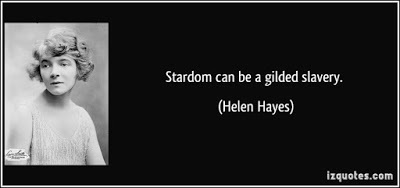
I’ve always been mesmerized by the concept of fame. As a kid growing up on Long Island, I was forever in awe of the talents and popularity of my great musical heroes. From my vantage point, there was nothing better than having a hit song on the radio and getting the chance to play it in front of thousands of screaming fans. Musical stardom had to be the pinnacle of all achievements.
In my teens and twenties, I became one of those screaming fans, using babysitting money to buy concert tickets to see my favorite artists. Sitting in darkened theaters and arenas, I could imagine no grander moment than the one where the star walks out on stage into the bright spotlight, soaking in the adulation. Goosebumps and shivers on a nightly basis. Absolutely mind-blowing!
 An interesting and most unexpected encounter with a real-life music legend began to alter my perception of the whole celebrity mythology. It was June of 1992. I had just graduated college and was spending a summer afternoon with my cousin, Mike down in Greenwich Village. We were standing in line at a Häagen-Dazs stand on West 8th Street when the guy in front of us reached the service window. “I’ll have a vanilla ice cream with chocolate sprinkles,” announced the curly-haired gentleman in a whiny yet familiar voice. The attendant quickly fulfilled the order, handed a cone to the man and then turned his attention to us. “Next please.”
An interesting and most unexpected encounter with a real-life music legend began to alter my perception of the whole celebrity mythology. It was June of 1992. I had just graduated college and was spending a summer afternoon with my cousin, Mike down in Greenwich Village. We were standing in line at a Häagen-Dazs stand on West 8th Street when the guy in front of us reached the service window. “I’ll have a vanilla ice cream with chocolate sprinkles,” announced the curly-haired gentleman in a whiny yet familiar voice. The attendant quickly fulfilled the order, handed a cone to the man and then turned his attention to us. “Next please.”The man in front of us hadn’t yet paid for his order. He stood in place with one hand in his pocket. “Um, excuse me. How much for my ice cream?”
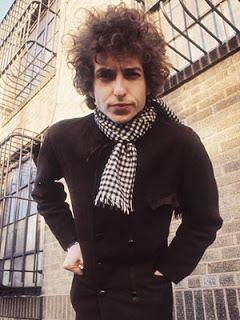 The counter attendant flashed a smile of recognition. “It’s an honor to serve you. We love your music. Have a great day.” He then turned back to us and asked, “So what are you guys having?”
The counter attendant flashed a smile of recognition. “It’s an honor to serve you. We love your music. Have a great day.” He then turned back to us and asked, “So what are you guys having?”Now growing irritated, the customer with the vanilla cone interrupted. “Hey, I said, how much for my ice cream?”
“Really, sir. It’s on the house. Please come again. I’m a big fan. We all are.”
“I said, how much for this ice cream?” the man insisted, now pounding a hand on the metal counter, his frustration mounting.
 “Okay, fine. It’s a dollar fifty,” said the worker in the Häagen-Dazs hat from behind the glass window.
“Okay, fine. It’s a dollar fifty,” said the worker in the Häagen-Dazs hat from behind the glass window.My cousin and I watched intently as the guy with the familiar, nasally voice reached into the pocket of his jeans for a pair of rumpled dollar bills. He slapped them on the counter and walked away muttering. “Everywhere I go I gotta be that guy. Everywhere I go. Can’t even pay for my own ice cream!”
Incredibly, this would be my first and only encounter with perhaps the greatest songwriter in pop music history, the incomparable Bob Dylan. But more importantly, it would offer a unique lesson on the concept of stardom and public recognition. When not on stage, even the biggest of celebrities often yearn to be treated as just another face in the crowd -- if only this were possible.
My career in marketing and publicity enabled me the unique privilege of meeting many of the stars I grew up admiring. And with each encounter, I was impressed to discover how even the world’s biggest superstars are very much regular people who just happen to occasionally walk red-carpets, perform to sold-out venues and have and a stack of 8 x 10s to autograph when they get home at night. They may live in spectacular mansions, date other beautiful celebrities, and eat in the world’s best restaurants. But more than anything else, I found that the one thing the world’s biggest superstars share in common is that they crave something that they rarely can enjoy. Normalcy.
In my novel, Poet Of The Wrong Generation, I transferred my youthful fascination of rock stars onto my protagonist, Johnny Elias. Johnny attends concerts with his friends and frequently imagines the absurdly happy lives these musical icons must be living off stage. But when a song he writes lands him a recording contract and suddenly climbs the pop charts, he quickly discovers that stardom is vastly different and more demanding than anything he ever imagined as a fan. Instead of mind-blowing happiness, Johnny’s life begins to buckle beneath the weight of his own unlikely celebrity.
One of the great musical heroes of my generation (and one who figures prominently in my novel) is Paul Simon. This past summer, in an interview with the New York Times, Mr. Simon said of musical stardom: “I’ve seen fame turn into absolute poison when I was a kid in the ’60s. It killed Presley. It killed Lennon. It killed Michael Jackson. I’ve never known anyone to have gotten an enormous amount of fame who wasn’t, at a minimum, confused by it and had a very hard time making decisions.” And this coming from a man who has spent more than half a century as one of the world’s most beloved singer/songwriters.
In the 1990s, Alanis Morrissette went from being an obscure Canadian teen singer to an overnight superstar with the worldwide success of her album, Jagged Little Pill. Fame brought her riches and wild popularity. Yet she wasn’t prepared for such a bright spotlight as she explained in 2014 to Oprah Winfrey. “My head spun around 360. I just remember having been the person who loved to sit and watch people... and then I immediately became the watched. That was really disconcerting. I remember looking down a lot. I didn’t laugh for about two years. A lot of self-protection. There was a lot of invading of boundaries. On some level, I think becoming famous and wanting fame, there’s some trauma. The traumatized person — in this case, me — gets traumatized by the very thing that I thought would be the balm.”
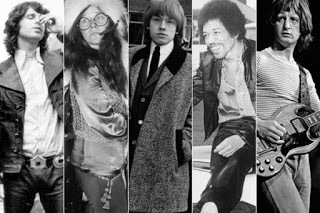 Rock music legends who died at the age of 27 The list of legendary music stars victimized by fame is staggering. Jim Morrison, Jimi Hendrix, Mama Cass, Janis Joplin, Kurt Cobain and Amy Winehouse are just a handful who struggled with celebrity and turned to drugs and alcohol as self-medication – vices that heavily contributed to their demise before the age of 30. Certainly there is no blueprint for the rock star to live by. Fame is undoubtedly not the key ingredient in lasting happiness.
Rock music legends who died at the age of 27 The list of legendary music stars victimized by fame is staggering. Jim Morrison, Jimi Hendrix, Mama Cass, Janis Joplin, Kurt Cobain and Amy Winehouse are just a handful who struggled with celebrity and turned to drugs and alcohol as self-medication – vices that heavily contributed to their demise before the age of 30. Certainly there is no blueprint for the rock star to live by. Fame is undoubtedly not the key ingredient in lasting happiness. 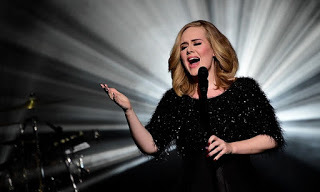 British songstress, Adele rose to worldwide superstardom in 2009 after winning Best New Artist at the Grammy Awards. Proud as she is of her success, she seems to have a realistic approach to celebrity. "Fame is not real. And I don't want to live a fake life. Sometimes I have my moments, but not that often,” she told BBC Radio in 2015. "I find fame quite frightening and I find it really toxic… It's very charming and it's very persuasive but it doesn't last so why would you want to get involved in something that you will miss so much when it's gone - and it always goes."
British songstress, Adele rose to worldwide superstardom in 2009 after winning Best New Artist at the Grammy Awards. Proud as she is of her success, she seems to have a realistic approach to celebrity. "Fame is not real. And I don't want to live a fake life. Sometimes I have my moments, but not that often,” she told BBC Radio in 2015. "I find fame quite frightening and I find it really toxic… It's very charming and it's very persuasive but it doesn't last so why would you want to get involved in something that you will miss so much when it's gone - and it always goes."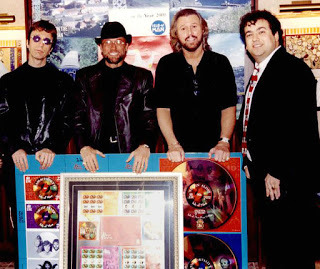 In 1999 I spent an afternoon with the Bee Gees as part of a postal tribute by their birth nation, the Isle Of Man. When I asked Maurice Gibb about the ups and downs of his long career he explained why he far more embraced fame in the later years. “I think you just appreciate it differently once you’ve hit bottom. You can’t really grasp the concept of stardom when it first happens to you. Everything moves so quickly and you have no perspective or appreciation, other than the cheers. But once you’ve been humbled a few times and realize that the fans are still there, it gives you that much more gratitude for the success you’ve achieved.”
In 1999 I spent an afternoon with the Bee Gees as part of a postal tribute by their birth nation, the Isle Of Man. When I asked Maurice Gibb about the ups and downs of his long career he explained why he far more embraced fame in the later years. “I think you just appreciate it differently once you’ve hit bottom. You can’t really grasp the concept of stardom when it first happens to you. Everything moves so quickly and you have no perspective or appreciation, other than the cheers. But once you’ve been humbled a few times and realize that the fans are still there, it gives you that much more gratitude for the success you’ve achieved.” Of course, not all rock stars and celebrities succumb to the pressures of fame. Many artists including Paul McCartney, The Rolling Stones, Neil Diamond, The Who, Neil Young, Frankie Valli and the aforementioned Bob Dylan are still performing with much fanfare well into their 70s. For some, it may be about the money to maintain a certain lifestyle. To others, it could be about the addiction to adulation that never wanes; not even with age.
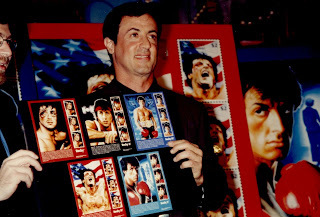 Sylvester Stallone and his Rocky StampsBack in 1996, I helped organized a postal tribute to Sylvester Stallone on 20th anniversary of the first Rocky film. Not a rock star, mind you, but a man who knows a thing or two about adulation and celebrity. I got to meet the actor in a private room at NY’s Planet Hollywood just before hosting the official ceremony. He provided a most unexpected and refreshing answer when I asked him what the honor meant to him.
Sylvester Stallone and his Rocky StampsBack in 1996, I helped organized a postal tribute to Sylvester Stallone on 20th anniversary of the first Rocky film. Not a rock star, mind you, but a man who knows a thing or two about adulation and celebrity. I got to meet the actor in a private room at NY’s Planet Hollywood just before hosting the official ceremony. He provided a most unexpected and refreshing answer when I asked him what the honor meant to him.“When you’re successful; when you have all this popularity, you really can go out and do whatever you want. You can buy the fastest cars, the biggest houses, take vacations anywhere. But the one thing you can’t buy, no matter how much money you earn is respect. Recognition that your talent and creativity is still appreciated.”
Respect and long-term appreciation are attributes that almost certainly get obscured in any initial rise to fame. But for those who survive the perils of the intense spotlight and the rock and roll lifestyle, it can often be the reward that awaits once the artist come to grips with their unique achievements. That, and the benefit of time and perspective balanced by a degree of Poet Of The Wrong Generation by Lonnie Ostrow is now available in paperback and eBook format. CLICK HERE TO ORDER YOUR COPY.

Published on December 08, 2016 06:49
December 1, 2016
Album Covers As An Artform

Long before the Internet, iTunes, music-videos and the late-night talk-show circuit there existed a unique platform indigenous to the music industry. A medium by which musicians could express themselves directly to their adoring public. A visual identity often created by the artist and delivered to the fans in a carefully crafted image.
From the late 1930s through the early 1980s, the album cover was the primary means of visual communication from a musician to their listeners: A 12 x 12 artistic statement that gave music buyers a sense as to what they could expect to hear when the needle hit the vinyl grooves.
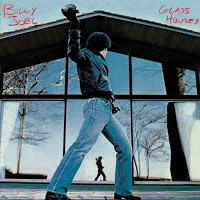 Album covers have long been a part of my own home décor and that of my music-loving friends. As a pre-teen, I collected records by my favorite artists of the 1970s and 80s. REO Speedwagon’s High Infidelity often stood propped up proudly atop my bedroom record player. Billy Joel’s Glass Houses was another. In my teenage years it was posters of the classic Beatles albums such as Revolver and Abbey Road that hung on my bedroom walls (and no doubt on the walls of millions of fans the world over). In my mind’s eye I can still visualize a poster for London Calling by The Clash on the bedroom door of my friend, Peter back in 7th grade. His older sister, Michelle wallpapered her room in U2 posters. And to think there was actually a time when music was sold in the artistic equivalent of a throwaway lunch bag.
Album covers have long been a part of my own home décor and that of my music-loving friends. As a pre-teen, I collected records by my favorite artists of the 1970s and 80s. REO Speedwagon’s High Infidelity often stood propped up proudly atop my bedroom record player. Billy Joel’s Glass Houses was another. In my teenage years it was posters of the classic Beatles albums such as Revolver and Abbey Road that hung on my bedroom walls (and no doubt on the walls of millions of fans the world over). In my mind’s eye I can still visualize a poster for London Calling by The Clash on the bedroom door of my friend, Peter back in 7th grade. His older sister, Michelle wallpapered her room in U2 posters. And to think there was actually a time when music was sold in the artistic equivalent of a throwaway lunch bag. The first album cover design The first album cover design is widely credited to a man called Alex Steinweiss, who in 1938 became the original art director for Columbia Records. In the decades prior, vinyl records were displayed in brown paper or cardboard sleeves that were either plain, or sometimes printed to show the retailer's name. These generic record sleeves had a circular cutout in the center allowing the record label to be seen. Steinweiss’s 1939 design of a theater marquee for a collection of Broadway hits by composers Rogers and Hart is widely credited as the very first album cover. For the next 40+ years, record packaging and its cover image became nearly as essential as the music contained on the record itself.
The first album cover design The first album cover design is widely credited to a man called Alex Steinweiss, who in 1938 became the original art director for Columbia Records. In the decades prior, vinyl records were displayed in brown paper or cardboard sleeves that were either plain, or sometimes printed to show the retailer's name. These generic record sleeves had a circular cutout in the center allowing the record label to be seen. Steinweiss’s 1939 design of a theater marquee for a collection of Broadway hits by composers Rogers and Hart is widely credited as the very first album cover. For the next 40+ years, record packaging and its cover image became nearly as essential as the music contained on the record itself. The earliest album covers for top selling Jazz artists of the 1940s were created by art directors without any input from the performers. Amazingly, music legends like Miles Davis, Duke Ellington and Billie Holiday often didn’t see their finished cover designs until it was ready to hit the stores for release. Some of these basic layouts featured illustrations of instruments, colorful shapes and occasionally a photo of the performer.
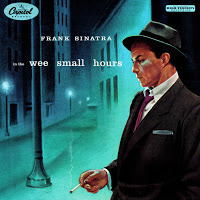
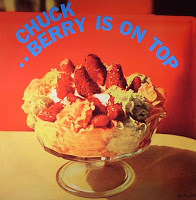
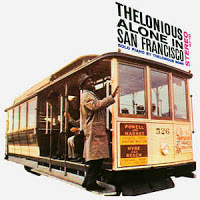 The 1950s saw an increase in creativity of the artist photographs to grace album covers. In The Wee Small Hoursfeatures a stylish image of Frank Sinatra in suit and tie, wearing his trademark fedora hat and holding a lit cigarette. Alone In San Francisco by Jazz pianist, Thelonious Monk shows the musician hanging onto the side of a trolley car. The early days of rock & roll brought classic yet simple covers for Elvis Presley and Chuck Berry, among others. Elvis’s self titled debut displays a black
The 1950s saw an increase in creativity of the artist photographs to grace album covers. In The Wee Small Hoursfeatures a stylish image of Frank Sinatra in suit and tie, wearing his trademark fedora hat and holding a lit cigarette. Alone In San Francisco by Jazz pianist, Thelonious Monk shows the musician hanging onto the side of a trolley car. The early days of rock & roll brought classic yet simple covers for Elvis Presley and Chuck Berry, among others. Elvis’s self titled debut displays a black The cover designs of the 1960s can be likened to the month of March in reverse. Instead of coming in like a lion and going out like a lamb, quite the opposite is true. What began as mainly subdued, smiling, perfectly posed publicity shots evolved into the provocative, moody, ultra creative and later the psychedelic. Even disastrous world events like the Hindenburg airship catching fire were in play, courtesy of Led Zeppelin. Volumes can be written on this revolutionary decade. For the purpose of brevity, I’ll stick to a handful of highlights.
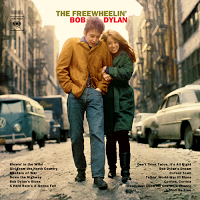 The Freewheelin Bob Dylan from 1963 shows a youthful folk troubadour walking down a wintry New York City street, arm-in-arm with a female companion, seemingly unaware of the camera. It’s a fine example of the early decade innocence that would rapidly be a changin.
The Freewheelin Bob Dylan from 1963 shows a youthful folk troubadour walking down a wintry New York City street, arm-in-arm with a female companion, seemingly unaware of the camera. It’s a fine example of the early decade innocence that would rapidly be a changin. 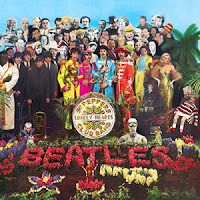
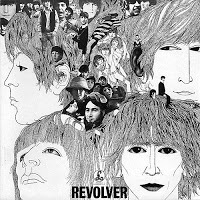 The early Beatles album covers varied from straightforward to sophisticated photos of the fab-four. Then came Klaus Voorman’s eye-catching, hand-drawn, black & white collage in 1966 for Revolver. This intricate design effort reflected the more complex sound and songwriting being produced by the band in studio. Their 1967 epic, Sgt. Pepper’s Lonely Hearts Club Band ushered in the era of psychedelia, both in music and design. The colorful collection of costumes, props, statues and celebrity cutouts helped steer cover designs in a whole new direction. Soon thereafter, bands like Cream (Disraeli Gears), Donavan (Sunshine Superman), and Jimi Hendrix (Axis Bold As Love) got into the trippy theme, taking it up to the next level.
The early Beatles album covers varied from straightforward to sophisticated photos of the fab-four. Then came Klaus Voorman’s eye-catching, hand-drawn, black & white collage in 1966 for Revolver. This intricate design effort reflected the more complex sound and songwriting being produced by the band in studio. Their 1967 epic, Sgt. Pepper’s Lonely Hearts Club Band ushered in the era of psychedelia, both in music and design. The colorful collection of costumes, props, statues and celebrity cutouts helped steer cover designs in a whole new direction. Soon thereafter, bands like Cream (Disraeli Gears), Donavan (Sunshine Superman), and Jimi Hendrix (Axis Bold As Love) got into the trippy theme, taking it up to the next level.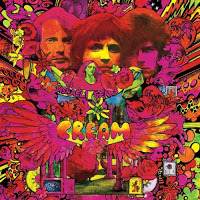

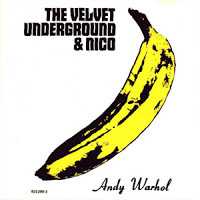
Legendary pop artist, Andy Warhol entered the cover design arena in 1967 with an innovative wrinkle. For the debut album of The Velvet Underground and Nico, Warhol created (at great expense) a multi layered paper banana that could be peeled back to reveal the fruit underneath. His second cover design for The Rolling Stones Sticky Fingers in 1971 featured an actual zipper on an illustrated pair of jeans. It is considered iconic now, but at the time it caused many of the vinyl records to be damaged during the shipping process, angering fans who actually wanted to hear the music.
Illustration became a major design theme throughout the 1970s. Two shining
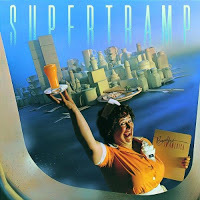 examples of this style are Supertramp’s Breakfast In America and Elton John’s Captain Fantastic & the Brown Dirt Cowboy. Next came the illustrated band logos on covers including UFOs for Boston and the Electric Light Orchestra (ELO), the lips and tongue for the Rolling Stones, and a horse with wings for the Steve Miller Band. Oh, and of course the skull in a circle for the Grateful Dead.
examples of this style are Supertramp’s Breakfast In America and Elton John’s Captain Fantastic & the Brown Dirt Cowboy. Next came the illustrated band logos on covers including UFOs for Boston and the Electric Light Orchestra (ELO), the lips and tongue for the Rolling Stones, and a horse with wings for the Steve Miller Band. Oh, and of course the skull in a circle for the Grateful Dead.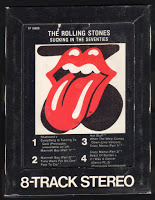
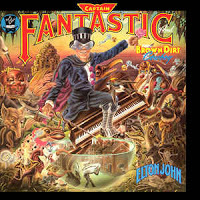 The creativity of album cover art likely reached its apex in the mid 70s. Then came the 8-track tape, the cassette tape and eventually the compact disc. As the packaging grew smaller, less emphasis went into the cover image. Record companies spent less time, and smaller budgets on their design. By the late 80s, a great deal of cover images were back to featuring simple publicity shots on a colorful background.
The creativity of album cover art likely reached its apex in the mid 70s. Then came the 8-track tape, the cassette tape and eventually the compact disc. As the packaging grew smaller, less emphasis went into the cover image. Record companies spent less time, and smaller budgets on their design. By the late 80s, a great deal of cover images were back to featuring simple publicity shots on a colorful background. In my novel, Poet Of The Wrong Generation, my pop-star protagonist, Johnny Elias is a keen observer on the decline of the album cover in the early 1990s. He’s a music fan who was raised on classic vinyl. His dissatisfaction with his record label’s artistic deficiencies pushes him to take matters into his own hands when it comes to the cover art for his debut album. A throwback design concept that he dreams up (executed by a dear friend) proves the ideal match for his collection of songs inspired by an earlier era. It ultimately helps to launch his career into unlikely overnight superstardom.
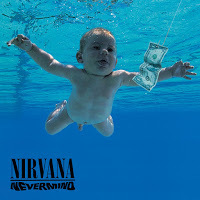
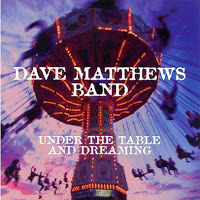 Of course, even as the CD overtook record bins in the retail stores, there was still the occasional brilliant cover design. Nirvana’s Neverminddisplays a naked baby swimming after a dollar bill in the deep end of a pool. It became to 90’s music fans what Dark Side Of The Moon represented to music lovers two decades earlier. Dave Matthews Band’s Under The Table And Dreaming displays a brilliantly blurred photo of an amusement park swing ride in motion. And the Foo Fighters debut album featuring a Buck Rogers Disintegrator Pistol became an instant classic for many.
Of course, even as the CD overtook record bins in the retail stores, there was still the occasional brilliant cover design. Nirvana’s Neverminddisplays a naked baby swimming after a dollar bill in the deep end of a pool. It became to 90’s music fans what Dark Side Of The Moon represented to music lovers two decades earlier. Dave Matthews Band’s Under The Table And Dreaming displays a brilliantly blurred photo of an amusement park swing ride in motion. And the Foo Fighters debut album featuring a Buck Rogers Disintegrator Pistol became an instant classic for many.
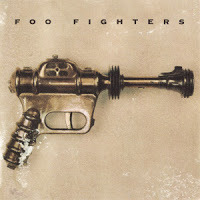
Even at a size of 4.72 inches square, the compact disc still provided music consumers with a reasonably sized canvas to appreciate cover art. But as the age of the digital download arrived, this canvas size has now been reduced to a thumbnail graphic on a computer screen… or even worse, on a mobile phone, or tablet. We’re no longer talking inches, but simply 1,400 x 1,400 pixels, or essentially the size of a postage stamp. Most of the big record store chains - once a hangout place for music lovers - have become extinct. Tower Records. Sam Goody. Virgin Megastores. All gone. The concept of browsing through stacks of records and CD bins is now mostly as nostalgic as the music from that era.
Another contributing factor in the decline of the album cover is the current day marketing of musicians. In the 50s, 60s and 70s, the album cover and maybe a fortuitous feature in Rolling Stone magazine was your messaging. The rise of MTV, VH-1 and later YouTube gave prominence to the music video, allowing for a whole different kind of artistic expression. The evolution of TV talk shows, websites, podcasts and email newsletters have provided countless new exposure and branding opportunities for the music maker of today. Instead of a lackluster cover design being a crippling blow to a new release, a band can often overcome this handicap by pulling a wild publicity stunt, or by grabbing tabloid headlines for outrageous behavior.
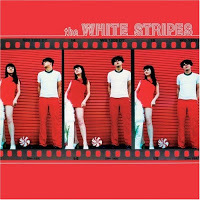 Thankfully, there is still a strong collectible market for classic vinyl records. And on a small-scale, there has even been something of a specialty comeback of vinyl releases. In 2014, record sales grew by 50% to just over one million copies, the highest figure since 1996 according to Newsweek. Sure, nostalgia is a big part of this commercial uptick. But it is also a selection of limited edition vinyl releases by popular bands like Arctic Monkeys and the White Stripes. It certainly can’t be due to the scratchy, crackling sound of records, when compared with the audio perfection of a digital recording. No doubt, the full-sized 12 x 12 cover design may be the only enhancement, and probable drawing card in this wistful music buying experience.
Thankfully, there is still a strong collectible market for classic vinyl records. And on a small-scale, there has even been something of a specialty comeback of vinyl releases. In 2014, record sales grew by 50% to just over one million copies, the highest figure since 1996 according to Newsweek. Sure, nostalgia is a big part of this commercial uptick. But it is also a selection of limited edition vinyl releases by popular bands like Arctic Monkeys and the White Stripes. It certainly can’t be due to the scratchy, crackling sound of records, when compared with the audio perfection of a digital recording. No doubt, the full-sized 12 x 12 cover design may be the only enhancement, and probable drawing card in this wistful music buying experience. It seems likely that artwork will still have a role to play as the music business re-shapes itself. But it is fair to declare that the golden age of this once crucial medium is long in the rear-view mirror.
Poet Of The Wrong Generation by Lonnie Ostrow is now available in paperback and eBook format. CLICK HERE to order your copy.

Published on December 01, 2016 08:40
November 22, 2016
The Art & Legacy Of Harry Chapin
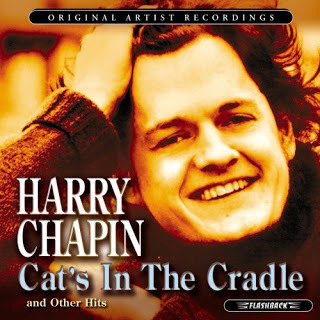
It is one of those nights from my childhood that I’ll never forget. Thursday, July 16, 1981. I was ten years old, enjoying the summer at a Long Island day camp. That evening, the campers were taken on a late-night trip to see a musical production of Damn Yankees at the Jones Beach amphitheater. The big attraction: Joe Namath, the famed NY Jets Quarterback starring as Joe Hardy, the lead character.
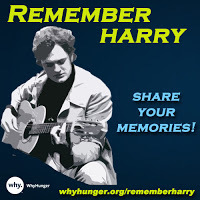 It was approaching 10pm when the buses pulled into the camp parking lot. Some 300 kids stepped off into the dark and began looking for their ride home. I was seeking a red four-door Pontiac Bonneville, the one my Dad proudly drove in those days. The night was humid. The air-conditioning in my Dad’s car was cranked up to full blast. But when I ducked inside the back seat, I found my father in a somber mood.
It was approaching 10pm when the buses pulled into the camp parking lot. Some 300 kids stepped off into the dark and began looking for their ride home. I was seeking a red four-door Pontiac Bonneville, the one my Dad proudly drove in those days. The night was humid. The air-conditioning in my Dad’s car was cranked up to full blast. But when I ducked inside the back seat, I found my father in a somber mood.“Dad, you gotta hear about the show. Joe Namath; he was so funny. He couldn’t sing. We were all laughing.”
My father – usually the life of every party – sat quietly behind the wheel. He looked up to acknowledge me in the rearview mirror and forced a smile. “Glad you had fun. It’s been a sad night. Harry Chapin died. He was driving to do a concert. Got killed in a car crash on the LIE.”
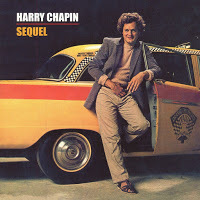 Harry Chapin: One of the regular musical voices I would hear on my Dad’s car stereo from his vast collection of 8-track tapes. Taxi. Flowers Are Red. And the unforgettable, Cats In The Cradle. Not the rangiest singer. But undeniably one of the great singer-songwriters there ever was. Also, one of music’s true humanitarians. The inspiration behind one of NY radio’s great annual traditions.
Harry Chapin: One of the regular musical voices I would hear on my Dad’s car stereo from his vast collection of 8-track tapes. Taxi. Flowers Are Red. And the unforgettable, Cats In The Cradle. Not the rangiest singer. But undeniably one of the great singer-songwriters there ever was. Also, one of music’s true humanitarians. The inspiration behind one of NY radio’s great annual traditions.In my novel, Poet Of The Wrong Generation, the protagonist, Johnny Elias, leverages airplay on a NY radio station by performing on a radio-thon benefit. While the station in my story is fictional, the cause and the participating organization is real: World Hunger Year (now re-named WHYHunger). A foundation established by Harry Chapin and radio personality, Bill Ayers in 1975.
I have solid memories from my teenage years of the many radio-thons hosted on the old WNEW-FM around Thanksgiving time each year. So many rock stars donated items for auction to help combat world hunger. Others would pop by the studio, perform songs and chat with the DJs. These were the best broadcasts presented all year. Significant
Ask any songwriter to compile a list of the greatest songs ever written. Cats In The Cradle is likely to appear on 90% of the lists. Harry Chapin’s lyrical story about the cycle of neglected father and son relationships is perhaps the pinnacle of the folk-rock genre. Ironically, the poignant lyrics to the song, which hit # 1 on the charts in 1974, were not penned by the great songwriter, but by his wife, Sandra. She’d written them in a poem about the awkward relationship between her ex-husband and his father. Nonetheless, credit Harry for adapting the poem as a song, and for giving it the melody, guitar playing and the voice.
 Chapin was first and foremost a storyteller. His first hit, Taxi, tells the tale of a pair of ex-lovers who meet up years later by chance. Harry is the taxi-driver and “Sue” has become a Hollywood actress, successful, but unhappy. Another classic, WOLD, tells the story of an aging DJ, struggling to maintain relevance as he moves on to yet another city. The characters always so fully developed and relatable.
Chapin was first and foremost a storyteller. His first hit, Taxi, tells the tale of a pair of ex-lovers who meet up years later by chance. Harry is the taxi-driver and “Sue” has become a Hollywood actress, successful, but unhappy. Another classic, WOLD, tells the story of an aging DJ, struggling to maintain relevance as he moves on to yet another city. The characters always so fully developed and relatable.Chart success did not come regularly for Chapin. Aside from Cats In The Cradle, none of his singles cracked the top ten. But the success of that one chart-topper made Chapin an instant millionaire, and a popular concert attraction. Still, the singer refused to stand pat and enjoy his riches. He joined the boards of local institutions like Hofstra University and the Long Island Philharmonic. He also staged numerous benefit concerts for causes brought to his attention. Even his regular concert performances featured merchandise for sale to benefit various charities.
 Harry Chapin’s tragic death on the Long Island Expressway in the summer of 1981 did not put an end to his philanthropic endeavors. WHYHunger continues to host its annual radio-thon in NY each November. This award-winning nonprofit organization now provides assistance to combat poverty and hunger in some 8,000 communities worldwide. A beautiful legacy for a remarkably talented troubadour cut down in the prime of his life.
Harry Chapin’s tragic death on the Long Island Expressway in the summer of 1981 did not put an end to his philanthropic endeavors. WHYHunger continues to host its annual radio-thon in NY each November. This award-winning nonprofit organization now provides assistance to combat poverty and hunger in some 8,000 communities worldwide. A beautiful legacy for a remarkably talented troubadour cut down in the prime of his life. Poet Of The Wrong Generation by Lonnie Ostrow is now available in paperback and eBook format. CLICK HERE to order your copy.

CLICK HERE to order your copy.
Published on November 22, 2016 07:29
November 16, 2016
Meeting The Bee Gees: A Leader, A Jokester & A Mensch
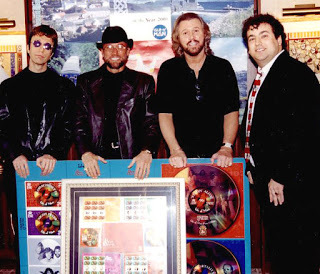
Meeting your childhood heroes can be intimidating, nerve-wracking and occasionally disappointing. Sometimes it can be truly magical. During my seven years as PR/Marketing director for IGPC - the world’s largest international postal agency - I had the unique opportunity to work with dozens of my favorite entertainers from the world of film, TV, sports and music. I could write volumes on my interactions with all of them. But perhaps the most unforgettable of all my celebrity encounters was the afternoon that I spent in the company of the Bee Gees.
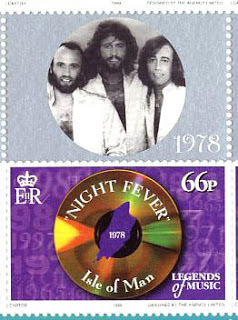 It was October 21, 1999. The day of the Broadway premiere of Saturday Night Fever (the musical). Barry, Robin and Maurice Gibb were in town to walk the red carpet and waive to the crowd ahead of the opening curtain.
It was October 21, 1999. The day of the Broadway premiere of Saturday Night Fever (the musical). Barry, Robin and Maurice Gibb were in town to walk the red carpet and waive to the crowd ahead of the opening curtain. In the months prior to this occasion, I had been hard at work at organizing a postal tribute to the brother’s Gibb from their birth nation, the Isle Of Man. For those unfamiliar, Isle Of Man is a small island nation, located in the Irish Sea between Great Britain and Ireland. Their innovative postal administration had already issued stamps of a handful of pop-culture subjects to that point (including Thomas the Tank Engine and Lord of the Rings). The Bee Gees, however, were their most famous sons. A special event seemed in order, provided that the three brothers could coordinate their busy schedules to participate in a formal ceremony.
In the months prior to this occasion, I had been hard at work at organizing a postal tribute to the brother’s Gibb from their birth nation, the Isle Of Man. For those unfamiliar, Isle Of Man is a small island nation, located in the Irish Sea between Great Britain and Ireland. Their innovative postal administration had already issued stamps of a handful of pop-culture subjects to that point (including Thomas the Tank Engine and Lord of the Rings). The Bee Gees, however, were their most famous sons. A special event seemed in order, provided that the three brothers could coordinate their busy schedules to participate in a formal ceremony.By 1999, I had organized and hosted numerous, high-profile extravaganzas where living legends from Kirk Douglas to Jackie Chan had unveiled their own postage stamps in tribute to their life and careers. All of these events were public spectacles. They were staged in front of a large audience with a heavy media presence and flashbulbs popping. The Bee Gees were delighted by their hometown postal honor, but wanted none of the fanfare that our previous honorees received.
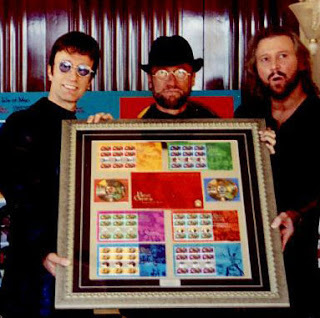 Careful negotiations resulted in a proposed 90 minute photo session behind closed doors. We were required to rent out a penthouse suite at the Rihga Royal Hotel on West 54thStreet in Manhattan (where the three brothers and their families would be staying). The only individuals allowed to attend this private event were me, our photographer, her assistant and two women executives from the Isle of Man post office (who flew trans-Atlantic the night before to be present).
Careful negotiations resulted in a proposed 90 minute photo session behind closed doors. We were required to rent out a penthouse suite at the Rihga Royal Hotel on West 54thStreet in Manhattan (where the three brothers and their families would be staying). The only individuals allowed to attend this private event were me, our photographer, her assistant and two women executives from the Isle of Man post office (who flew trans-Atlantic the night before to be present).Our party of five arrived at the luxury hotel around noontime. We were escorted to the top-floor suite via a private elevator and led inside by a concierge. The room was spectacular. It featured a panoramic view of the city from the 54thfloor. There was also a pair of outdoor balconies, three private bedrooms, a fireplace and a formal dining area. Sheer opulence.
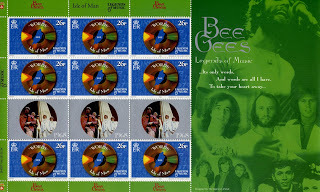 Our photographer, Harriet, and I immediately began scouting the ideal location to set up our easel and the giant poster-board featuring a reproduction of the Bee Gees stamps. We ultimately settled on the entrance-way -- a dramatic pair of mahogany double-doors. We covered the poster with an oversized Isle Of Man flag brought over by the Postmaster, Dot Tillbury.
Our photographer, Harriet, and I immediately began scouting the ideal location to set up our easel and the giant poster-board featuring a reproduction of the Bee Gees stamps. We ultimately settled on the entrance-way -- a dramatic pair of mahogany double-doors. We covered the poster with an oversized Isle Of Man flag brought over by the Postmaster, Dot Tillbury.Just prior to the Bee Gees scheduled arrival, a young publicist popped into the suite. She sought me out and began complaining about the climate. “It’s too damn hot in here. Barry’s hair is going to wilt! Until this room is down to 68 degrees the boys won’t be coming in.”
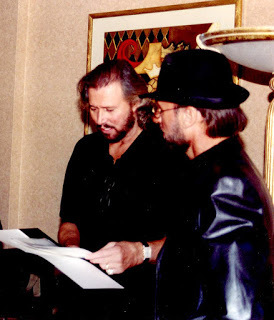 Barry and Maurice Gibb review their stampsI recall having to phone the main desk to locate the thermostat (which was inside a coat closet). It took 20 minutes for the room temperature to drop. And soon thereafter, our guests-of-honor casually waltzed in. All three were dressed in black from head-to-toe. Barry Gibb wore a polo shirt, black slacks and a pair of dark shades. The twins, Maurice and Robin were identically dressed in black t-shirts, black jeans and black leather jackets. Maurice also wore his trademark fedora hat which made him stand out from his brothers. What a thrill it was to suddenly be in the presence of these all-time prolific hit-makers.
Barry and Maurice Gibb review their stampsI recall having to phone the main desk to locate the thermostat (which was inside a coat closet). It took 20 minutes for the room temperature to drop. And soon thereafter, our guests-of-honor casually waltzed in. All three were dressed in black from head-to-toe. Barry Gibb wore a polo shirt, black slacks and a pair of dark shades. The twins, Maurice and Robin were identically dressed in black t-shirts, black jeans and black leather jackets. Maurice also wore his trademark fedora hat which made him stand out from his brothers. What a thrill it was to suddenly be in the presence of these all-time prolific hit-makers. In my novel, Poet Of The Wrong Generation, my protagonist, Johnny Elias evolves from a young music fan to an overnight megastar. However, his meteoric rise to fame is only self-validated after meeting one of his musical heroes (Ray Manzarek of the Doors) and discovering how approachable he turns out to be. For me, the validation of months of detailed preparation for a celebrity tribute project was the reception I received from the honoree. Or in this case, getting to know these three iconic musicians on a personal level, if just for an afternoon.
Barry Gibb was the big brother of the trio, and acted very much like the group-leader. He took charge upon entering the suite, re-positioning our easel, while offering genial instructions to our photographer about lighting.
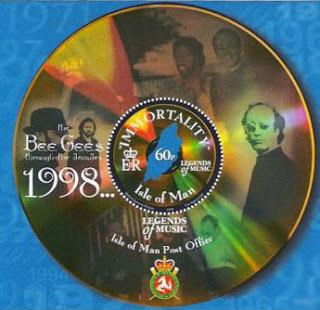 Robin Gibb entered with a playful smirk on his face. After greeting the women from the IOM post office, he began cracking jokes about his birth-nation’s flag, which features three legs in the center. His blue framed circular glasses hid his mischievous eyes, though he periodically lowered them down the bridge of his nose to flash a glimpse of his playfulness. He began singing an improvised song which repeatedly featured the words “the three legs of man.”
Robin Gibb entered with a playful smirk on his face. After greeting the women from the IOM post office, he began cracking jokes about his birth-nation’s flag, which features three legs in the center. His blue framed circular glasses hid his mischievous eyes, though he periodically lowered them down the bridge of his nose to flash a glimpse of his playfulness. He began singing an improvised song which repeatedly featured the words “the three legs of man.”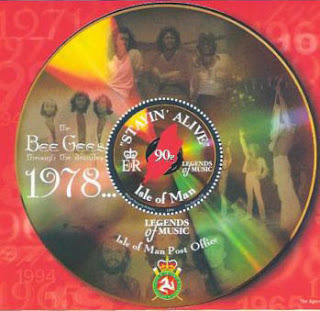 Maurice Gibb was utterly delightful. The bearded keyboard player approached me straight away and began asking about other musicians who had previously appeared on stamps. I came equipped that day with the stamps of Barbra Streisand and Bob Dylan, which I shared with him in a folder. We chatted for a few minutes about our favorite music by these artists. He then quizzed me on which of the Bee Gees songs had been written by which of the three brothers. We could have conversed for hours had he not been summoned away by Barry to commence the photo shoot.
Maurice Gibb was utterly delightful. The bearded keyboard player approached me straight away and began asking about other musicians who had previously appeared on stamps. I came equipped that day with the stamps of Barbra Streisand and Bob Dylan, which I shared with him in a folder. We chatted for a few minutes about our favorite music by these artists. He then quizzed me on which of the Bee Gees songs had been written by which of the three brothers. We could have conversed for hours had he not been summoned away by Barry to commence the photo shoot.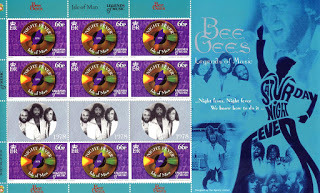
Unlike our formal public stamp unveilings, there was no script to this event. No introductions or speeches. Instead, the brothers stood huddled around the flag-covered poster, then slowly unveiled it and began posing with the stamp enlargement. At one point, Barry and Robin removed the poster from the easel and held it up from either side. Maurice slid behind the board, resting his chin at the top, then ducked down until only his hat was showing. The photos from that session wonderfully capture how much fun the Gibbs were having with this unique postal honor.
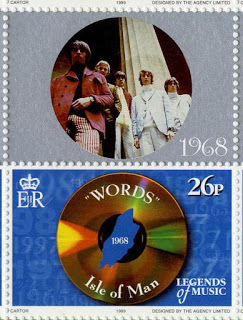 Soon after the first round of photos, Barry motioned for the women from Isle of Man Post to pose with him and his brothers. Next, they asked for me to join them for a few shots. I had come prepared with a specially framed collection of the stamps sheets, which I presented to them. This led to another series of smiles and poses. The brothers were even gracious enough to ask our photographer and her assistant to jump in to be photographed with the trio.
Soon after the first round of photos, Barry motioned for the women from Isle of Man Post to pose with him and his brothers. Next, they asked for me to join them for a few shots. I had come prepared with a specially framed collection of the stamps sheets, which I presented to them. This led to another series of smiles and poses. The brothers were even gracious enough to ask our photographer and her assistant to jump in to be photographed with the trio.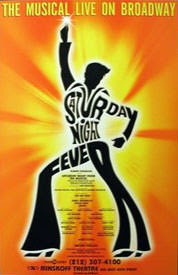 The shoot lasted about 20 minutes. The brothers then sat down on the sofas in the room and began signing autographs on the handful of stamp sheets that the postal reps had brought along. They also signed posters, Isle of Man tourist brochures, and whatever else the women could stuff into a pair of shopping bags. All throughout, the Bee Gees entertained us with stories of their childhood in their native country. Robin shared an insight of how a sound made by their father’s car driving over a particular bridge inspired the opening rhythm to their hit, Jive Talkin. Maurice sang us a few lines from Night Fever in an exaggerated German accent in response to a question about international premiers of Saturday Night Fever. And Barry spoke excitedly about an upcoming New Year’s Eve millennium concert that they were going to play in Miami.
The shoot lasted about 20 minutes. The brothers then sat down on the sofas in the room and began signing autographs on the handful of stamp sheets that the postal reps had brought along. They also signed posters, Isle of Man tourist brochures, and whatever else the women could stuff into a pair of shopping bags. All throughout, the Bee Gees entertained us with stories of their childhood in their native country. Robin shared an insight of how a sound made by their father’s car driving over a particular bridge inspired the opening rhythm to their hit, Jive Talkin. Maurice sang us a few lines from Night Fever in an exaggerated German accent in response to a question about international premiers of Saturday Night Fever. And Barry spoke excitedly about an upcoming New Year’s Eve millennium concert that they were going to play in Miami.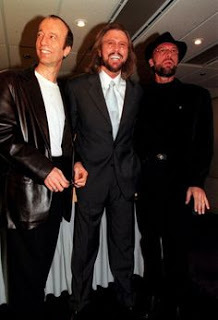 The Bee Gees arrive on Broadway A delightful hour passed in an eye-blink. Then it was time to bid our farewell to our honorees. Robin snuck out quietly with his framed set of stamps. Barry shook my hand graciously, then hugged each of the women in our group before exiting. Maurice was the last to depart. But before leaving the suite, he walked around the room, handing each of us a small white envelope. Contained inside was a pair of tickets to that night’s Broadway premiere. “I hope to see you guys tonight at the theater,” he remarked. And later he made good on this promise, visiting us in the balcony during intermission that evening. A true rock n roll mensch if ever I met one.
The Bee Gees arrive on Broadway A delightful hour passed in an eye-blink. Then it was time to bid our farewell to our honorees. Robin snuck out quietly with his framed set of stamps. Barry shook my hand graciously, then hugged each of the women in our group before exiting. Maurice was the last to depart. But before leaving the suite, he walked around the room, handing each of us a small white envelope. Contained inside was a pair of tickets to that night’s Broadway premiere. “I hope to see you guys tonight at the theater,” he remarked. And later he made good on this promise, visiting us in the balcony during intermission that evening. A true rock n roll mensch if ever I met one.A sad postscript to this memory is that Maurice Gibb died most unexpectedly just three years after our encounter. He was only 53 years old. And his twin, Robin left us far too young just nine years later.
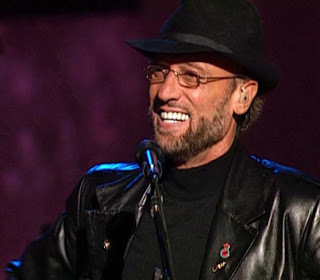 Maurice GibbThe premature loss of these supremely talented and likable musicians leaves me to appreciate all the more my incredibly good fortune to have spent a moment in time with all three of them
Maurice GibbThe premature loss of these supremely talented and likable musicians leaves me to appreciate all the more my incredibly good fortune to have spent a moment in time with all three of themPoet Of The Wrong Generation by Lonnie Ostrow is now available in paperback and eBook format.
CLICK HERE TO ORDER YOUR COPY.

Published on November 16, 2016 06:59
November 3, 2016
You Never Forget Your First Concert
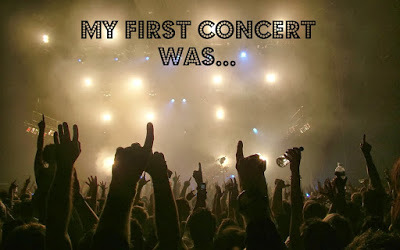
“So what was the first concert you attended?” It’s a question I’ve been asked, and posed to others many times as a conversation starter. It has helped to ease awkward first dates, lunch gatherings in new communities, and extended car trips with strangers. It even once came up as an icebreaker on a job interview.
If you are fortunate enough to have seen a “brand-name” for your first show, well, the answer should roll right off your tongue with the greatest of pride. For others, the occasional, long forgotten flash-in-the-pan performer can provoke big laughs, or at least help others to pinpoint your approximate age. And then there is that third category: Those who were brought to their first show by their parents, or older siblings, long before they knew who their favorite artists would be.
In my novel, Poet Of The Wrong Generation, my protagonist, Johnny Elias emerges on the pop music scene as an overnight superstar. He quickly finds himself performing concerts across America. On the long bus-rides between cities, he and his bandmates fill the hours by recounting their first concert-going experiences and favorite musical memories of yesteryear.
For just about everyone, the details of your first concert probably stick in your memory like it was yesterday. Where was the show? Who did you go with? Where were your seats? What songs were played? How late did you get home?
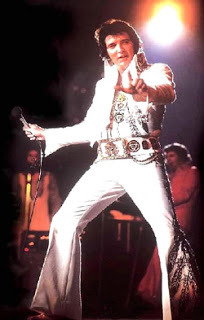 My wife remembers going with her parents to see Roberta Flack at Ontario Place theme park in Toronto as a teenager. My friend, Rachel, proudly describes seeing Rick Springfield with a group of screeching girlfriends back in 1983. My mom recalls seeing Tommy James and the Shondells play a few hits at her high-school prom in New Brunswick, NJ in 1967. For my friend, Harriet, it was Jimi Hendrix opening for the Monkees (and being booed off stage) at Forrest Hills Tennis Center. For me, I happen to have two answers to the first-concert question. Thankfully, both artists are all-time legends.
My wife remembers going with her parents to see Roberta Flack at Ontario Place theme park in Toronto as a teenager. My friend, Rachel, proudly describes seeing Rick Springfield with a group of screeching girlfriends back in 1983. My mom recalls seeing Tommy James and the Shondells play a few hits at her high-school prom in New Brunswick, NJ in 1967. For my friend, Harriet, it was Jimi Hendrix opening for the Monkees (and being booed off stage) at Forrest Hills Tennis Center. For me, I happen to have two answers to the first-concert question. Thankfully, both artists are all-time legends.I separate my first concert experiences into two categories because of the circumstances. There are concerts that you pay to see with assigned seating. And then there are bonus events, where a star performer just happens to be playing in an unlikely venue that you stumble upon. The latter is my first concert memory – and it is a doozy!
 It was August of 1982. I was eleven. My parents had taken my brothers and me to Six Flags Great Adventure in Jackson, NJ. This was in the week after summer camp had ended, just before the start of the school year. We had spent a superlative day riding roller coasters, log flumes and bumper cars under scorching sunshine. Then nightfall arrived. We were all looking forward to the grand finale -- the fireworks extravaganza. But there was still time between our dinner break and the shimmering sendoff.
It was August of 1982. I was eleven. My parents had taken my brothers and me to Six Flags Great Adventure in Jackson, NJ. This was in the week after summer camp had ended, just before the start of the school year. We had spent a superlative day riding roller coasters, log flumes and bumper cars under scorching sunshine. Then nightfall arrived. We were all looking forward to the grand finale -- the fireworks extravaganza. But there was still time between our dinner break and the shimmering sendoff.I am certain that my parents were entirely unaware as to what performance would be taking place that evening on the stage by the lake. There was no particular hype or anticipation. We simply found an empty row in the metal bleachers of the half-round theater awaiting a musical performance. I distinctly remember the relief of resting my tired feet after a day of standing in long lines.
And then it happened. The overhead lights dimmed. A center spotlight shone upon the stage. And a group of musicians emerged from behind a backdrop. That’s when the loud cheering began. I can’t recall if the artist was introduced over the PA system. But at age 11, I very much doubt that I would have known Roy Orbison by name.
I have vivid childhood memories of sitting in the backseat of my father’s car, listening to his 8-track tapes, and whatever songs he had playing on the radio. I didn’t know it at the time, but I was truly blessed to have been exposed to the best pop music ever made – that of the 1950s and 60s - over the airwaves of New York’s oldies station, WCBS-FM.
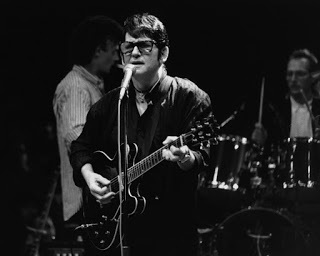 Roy Orbison dressed in black and wore his trademark dark sunglasses. It wasn’t a full-length concert, but rather a mini-show in which he performed about ten of his classic hits. His uncanny operatic voice was in fine form. He belted out the high-notes on Running Scared, Only The Lonely and Crying. I knew most of these tunes from the radio, which made this experience all the more satisfying. The roar of the crowd after each song only further validated my appreciation for Mr. Orbison’s massive talent.
Roy Orbison dressed in black and wore his trademark dark sunglasses. It wasn’t a full-length concert, but rather a mini-show in which he performed about ten of his classic hits. His uncanny operatic voice was in fine form. He belted out the high-notes on Running Scared, Only The Lonely and Crying. I knew most of these tunes from the radio, which made this experience all the more satisfying. The roar of the crowd after each song only further validated my appreciation for Mr. Orbison’s massive talent.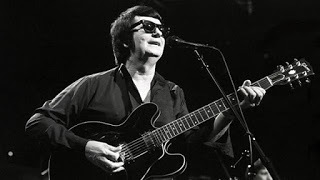 I can’t recall any details of the fireworks show that night, or whether I fell asleep on the long car ride home. But I will never forget the thrill of being in the audience of perhaps the greatest male vocalist of the pop music era for what turned out to be my initial concert experience.
I can’t recall any details of the fireworks show that night, or whether I fell asleep on the long car ride home. But I will never forget the thrill of being in the audience of perhaps the greatest male vocalist of the pop music era for what turned out to be my initial concert experience.Fast forward to October of 1988. I was a senior in high school. My independence had evolved, as had my musical tastes. Friends of mine were getting their driver’s licenses, earning money with summer jobs… and saving up to attend concerts. These were the days when buying tickets required you to visit the arena box office, or to call in an order by phone with Ticketmaster.
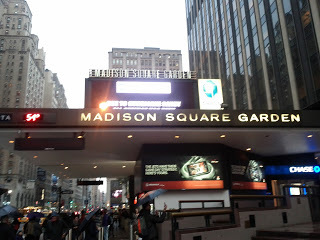 I had wanted to attend a variety of shows over the prior months. U2’s concert at Giant Stadium in ‘87 sold out in minutes. An REM show at Madison Square Garden had only single scattered seats by the time I got through on constant re-dial to a Ticketmaster operator. Going alone was hardly an option. I’d even attempted to buy tickets from a scalper to a sold-out concert by The Cars at MSG, only to realize that scalping required far more cash than I had to my name.
I had wanted to attend a variety of shows over the prior months. U2’s concert at Giant Stadium in ‘87 sold out in minutes. An REM show at Madison Square Garden had only single scattered seats by the time I got through on constant re-dial to a Ticketmaster operator. Going alone was hardly an option. I’d even attempted to buy tickets from a scalper to a sold-out concert by The Cars at MSG, only to realize that scalping required far more cash than I had to my name.Elton John had long been a favorite of mine. His string of radio hits stretched back to 1970, the year I was born. It was hard to recall any year to that point in which there wasn’t an Elton John tune somewhere in the top-40.
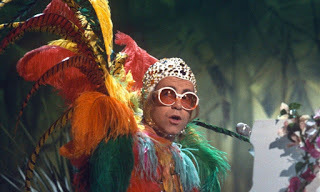 I’d long heard about Elton’s flamboyant performances that accompanied his catalog of hits. There was his rendition of Crocodile Rock on the Muppet Show that first caught my eye. He was covered in colorful feathers, wearing a pair of orange glasses and a rhinestone studded shower cap. Then came his 1980 concert in Central Park – the one in which he played piano in a full Donald Duck costume.
I’d long heard about Elton’s flamboyant performances that accompanied his catalog of hits. There was his rendition of Crocodile Rock on the Muppet Show that first caught my eye. He was covered in colorful feathers, wearing a pair of orange glasses and a rhinestone studded shower cap. Then came his 1980 concert in Central Park – the one in which he played piano in a full Donald Duck costume.A handful of my high school classmates were hard-core fans of the British hit maker. Kenny, Robert and Scott had twice been to see him at the old Spectrum arena in Philadelphia. They spoke of his shows as the pinnacle of musical entertainment. My curiosity was piqued.
I remember the night I stood in line on 8th Avenue, outside Madison Square Garden with my schoolmates, hoping for a shot at a ticket. It was hours before we reached the box office window. Most unfortunately, the show we were aiming for was sold out by the time we got to the front of the line. However, to our great satisfaction, a second and a third show had just been added. We were in! Just $25 for a seat in the 300-level, facing directly at the center of the stage for the Thursday night show. A massive bargain by today’s inflated standards.
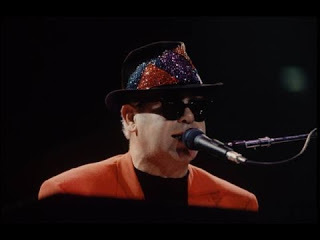 October of ’88 was something of a comeback for Elton John. He’d recently sold off most of his old costumes, and overcome a recent throat surgery. His then-recent concert album Live In Australia was a return to playing his earlier, classic material. In fact, the first eight songs he sung at the Garden that night were straight from that track-list.
October of ’88 was something of a comeback for Elton John. He’d recently sold off most of his old costumes, and overcome a recent throat surgery. His then-recent concert album Live In Australia was a return to playing his earlier, classic material. In fact, the first eight songs he sung at the Garden that night were straight from that track-list.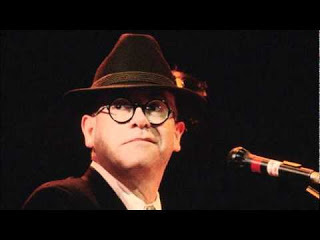 There weren’t many outrageous wardrobe changes that I can recall. But from the moment he hit the stage, until the final encore, it was his remarkable showmanship and virtuoso piano playing that had the crowd howling for more. Altogether, twenty four hits were performed, of which we and some 18,000 others all seemed to know the words to. So much energy in the building that night. Our throats were sore from screaming and our hands from constant high-fives. It was absolute magic.
There weren’t many outrageous wardrobe changes that I can recall. But from the moment he hit the stage, until the final encore, it was his remarkable showmanship and virtuoso piano playing that had the crowd howling for more. Altogether, twenty four hits were performed, of which we and some 18,000 others all seemed to know the words to. So much energy in the building that night. Our throats were sore from screaming and our hands from constant high-fives. It was absolute magic.These days I’m the dad of two daughters, one a teenager and the other a 4th grader. Eventually, I knew the day would arrive when I’d be asked to bring them to their first live show. Given my first-concert pedigree, well, I knew I’d have to make it a good one. For Amber, our older daughter, we picked the biggest living legend of all. Paul McCartney. 2009 at Boston’s Fenway Park. Her second live show was the first for our younger daughter, Casey. They dragged us to Jones Beach last September for a teenage shriek-fest by an Aussie boy-band called Five Seconds Of Summer. A flash in the pan? Only time will tell. But no matter the performer, one thing is for certain: For my girls, just like for me, the memories of that first show will never fade. In fact, they only get more legendary with time and perspective.
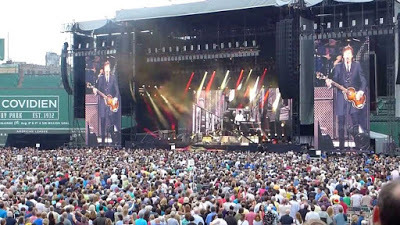
Poet Of The Wrong Generation by Lonnie Ostrow is now available in paperback and eBook format.CLICK HERE TO ORDER YOUR COPY.

Published on November 03, 2016 13:41
October 27, 2016
Video Made These Radio Stars
The year was 1983. MTV was broadcasting music-videos into the bedrooms of virtually every teenager across America. And the Greg Kihn Band was riding high on the pop-charts (and receiving steady video airplay) with its biggest hit, Jeopardy.
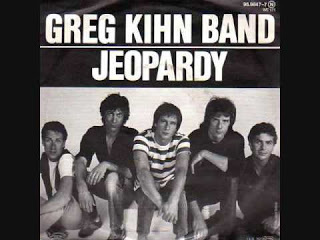
Flash forward thirteen years and Greg Kihn found himself riding a whole new wave of popularity – as the host of the # 1 rated FM radio morning show in the San Francisco Bay Area. A pop-star turned radio star, Kihn served as the wake-up voice across northern California for nearly two decades. A stark contradiction to the declaration made by the Buggles in their 1980 landmark hit, Video Killed The Radio Star.
In my novel, Poet Of The Wrong Generation, there’s a scene in which our protagonist, Johnny Elias, is visited at home by an iconic (fictional) radio personality, Larry Jacobs. Johnny, once a burgeoning pop star, is now living in suburbia and self-imposed obscurity after a major tumble from grace. Initially, Johnny suspects that Larry Jacobs is attempting to recruit him as a DJ on (the fictional) WNYR classic rock station. Mr. Jacobs clarifies his true reason for visiting, but also cites a handful of former popstars who went on to enjoy successful careers as radio personalities. The list is quite fascinating.
 Greg Kihn as a radio hostGreg Kihn and his band were hardly a one-hit-wonder. After a decade of releasing mildly successful albums in the 1970s, the band broke through in 1981 with their first top-20 hit, The Breakup Song. Jeopardy would hit # 2 on the singles chart, and was later famously spoofed by Weird Al Yankovic. But by 1987, musical success had dried up and the band went their separate ways. Following a pair of largely–ignored solo albums, Kihn got a tryout as a late-night DJ in San Jose. A year later, he was offered the morning show, which he successfully hosted until 2012.
Greg Kihn as a radio hostGreg Kihn and his band were hardly a one-hit-wonder. After a decade of releasing mildly successful albums in the 1970s, the band broke through in 1981 with their first top-20 hit, The Breakup Song. Jeopardy would hit # 2 on the singles chart, and was later famously spoofed by Weird Al Yankovic. But by 1987, musical success had dried up and the band went their separate ways. Following a pair of largely–ignored solo albums, Kihn got a tryout as a late-night DJ in San Jose. A year later, he was offered the morning show, which he successfully hosted until 2012.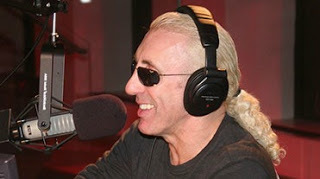
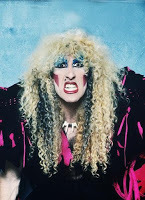 Dee Snider was the flamboyant front-man of the 80s hard rock group, Twisted Sister. His band peaked in 1984 with their album, Stay Hungry, featuring the hit songs: We’re Not Gonna Take It and I Wanna Rock. When Twisted Sister’s cycle of popularity ran its course, Snider moved behind the radio mic. In 1997, he began hosting a nationally syndicated heavy metal program aptly named House Of Hair. In 1999, Snider became the popular morning man in Hartford, CT on radio 104 FM – a position he would hold through 2003. After stints in a variety of reality TV shows, Snider again returned to radio, hosting a show on Sirius satellite radio.
Dee Snider was the flamboyant front-man of the 80s hard rock group, Twisted Sister. His band peaked in 1984 with their album, Stay Hungry, featuring the hit songs: We’re Not Gonna Take It and I Wanna Rock. When Twisted Sister’s cycle of popularity ran its course, Snider moved behind the radio mic. In 1997, he began hosting a nationally syndicated heavy metal program aptly named House Of Hair. In 1999, Snider became the popular morning man in Hartford, CT on radio 104 FM – a position he would hold through 2003. After stints in a variety of reality TV shows, Snider again returned to radio, hosting a show on Sirius satellite radio.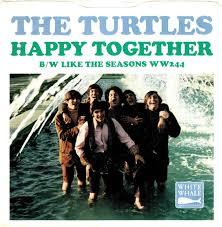
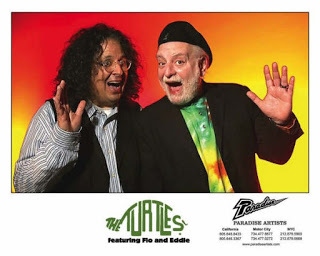 Howard Kaylan and Mark Volman are best known to music fans as Flo and Eddie. From 1964 – 1970, the duo performed as the classic rock group, The Turtles. The band scored a series of top-ten hits throughout the decade including the #1 smash, Happy Together. In 1970, Flo and Eddie joined up with Frank Zappa’s band, Mothers Of Invention. By the early 1980s, the duo set their sights on broadcasting. A tryout at a Los Angeles FM station (KROQ) led to a weekly show on Sunday nights, and eventually an afternoon show on KMET. Their program consisted of a blend of interviews with rock stars, comedy bits, and snippets of classic rock songs. From 1989 – 91, Flo and Eddie moved to NY, where they hosted the afternoon drive program on 92.3 FM, K-Rock. Eventually, they got back to live concert performances and left the radio business behind.
Howard Kaylan and Mark Volman are best known to music fans as Flo and Eddie. From 1964 – 1970, the duo performed as the classic rock group, The Turtles. The band scored a series of top-ten hits throughout the decade including the #1 smash, Happy Together. In 1970, Flo and Eddie joined up with Frank Zappa’s band, Mothers Of Invention. By the early 1980s, the duo set their sights on broadcasting. A tryout at a Los Angeles FM station (KROQ) led to a weekly show on Sunday nights, and eventually an afternoon show on KMET. Their program consisted of a blend of interviews with rock stars, comedy bits, and snippets of classic rock songs. From 1989 – 91, Flo and Eddie moved to NY, where they hosted the afternoon drive program on 92.3 FM, K-Rock. Eventually, they got back to live concert performances and left the radio business behind.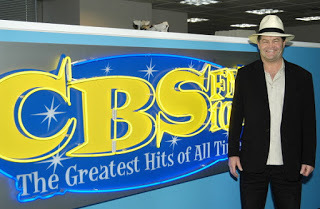
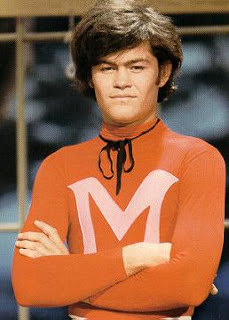 Mickey Dolenz rocketed to fame as the lead singer and drummer for The Monkees, a TV sitcom band who evolved into a much celebrated rock group. His lead vocals can be heard on the hit songs: I’m A Believer and Last Train To Clarksville. Dolenz continued to act on TV and in films after the Monkees break-up. He also performed on a variety of Monkees reunion tours throughout the decades. In 2005, Dolenz was handed the reigns of the morning show on WCBS-FM, New York’s legendary oldies station. Much fanfare was generated for the new program, which garnered strong ratings in its first three months
Mickey Dolenz rocketed to fame as the lead singer and drummer for The Monkees, a TV sitcom band who evolved into a much celebrated rock group. His lead vocals can be heard on the hit songs: I’m A Believer and Last Train To Clarksville. Dolenz continued to act on TV and in films after the Monkees break-up. He also performed on a variety of Monkees reunion tours throughout the decades. In 2005, Dolenz was handed the reigns of the morning show on WCBS-FM, New York’s legendary oldies station. Much fanfare was generated for the new program, which garnered strong ratings in its first three months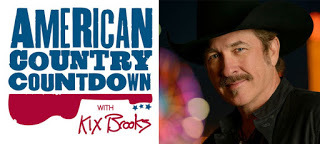 Country music fans across America have been in love with Kix Brooks since 1991. That was the year that he and Ronnie Dunn teamed up as Brooks & Dunn, the most successful duo in the history of country music. Brooks provides lead vocals on the #1 smash, You’re Gonna Miss Me When I’m Gone, one of twenty Country chart-toppers for the duo. In 2006, Brooks became the nationally syndicated radio host for America’s Country Countdown – a weekly Top-30 program. He took over for Bob Kingsley, the show’s longtime popular host. In a style similar to Casey Kasem’s American Top-40program, Brooks introduces the bestselling country songs of each week, reads listener requests, and shares stories about the artists in each 4-hour program. It is currently heard on 103 FM stations across America.
Country music fans across America have been in love with Kix Brooks since 1991. That was the year that he and Ronnie Dunn teamed up as Brooks & Dunn, the most successful duo in the history of country music. Brooks provides lead vocals on the #1 smash, You’re Gonna Miss Me When I’m Gone, one of twenty Country chart-toppers for the duo. In 2006, Brooks became the nationally syndicated radio host for America’s Country Countdown – a weekly Top-30 program. He took over for Bob Kingsley, the show’s longtime popular host. In a style similar to Casey Kasem’s American Top-40program, Brooks introduces the bestselling country songs of each week, reads listener requests, and shares stories about the artists in each 4-hour program. It is currently heard on 103 FM stations across America.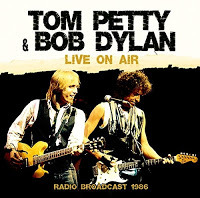 The advent of radio subscription services (Such as Sirius and XM) have turned other mega music stars into occasional DJs. Artists such as Tom Petty, Bruce Springsteen, Jimmy Buffett and even Bob Dylan have recorded a handful of pre-recorded studio banter on their artist-branded stations. It’s not quite the regular gig as cited in the examples above. However, the concept of popular recording artists transitioning to radio hosts is a trend we are most likely to see continue long into the future. An opportunity for heritage artists to keep in touch with their legions of fans, while also providing a deeper glimpse into their off-stage personalities.
The advent of radio subscription services (Such as Sirius and XM) have turned other mega music stars into occasional DJs. Artists such as Tom Petty, Bruce Springsteen, Jimmy Buffett and even Bob Dylan have recorded a handful of pre-recorded studio banter on their artist-branded stations. It’s not quite the regular gig as cited in the examples above. However, the concept of popular recording artists transitioning to radio hosts is a trend we are most likely to see continue long into the future. An opportunity for heritage artists to keep in touch with their legions of fans, while also providing a deeper glimpse into their off-stage personalities.Suffice to say, video did not kill the radio star. But in some cases, it may have enabled a few.
Poet Of The Wrong Generation by Lonnie Ostrow is now available for pre-sale in paperback and eBook format. It will be published on November 10th. CLICK HERE TO ORDER YOUR COPY.
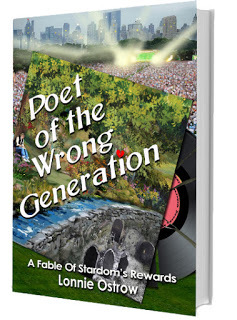
Published on October 27, 2016 08:10
October 10, 2016
Poet Of The Wrong Generation
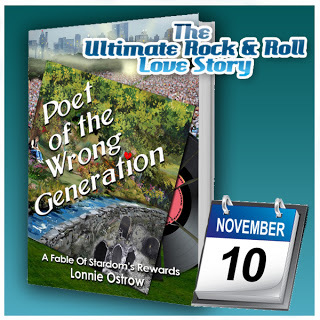 I guess the best place to start is to welcome everyone to my new blog forum. It's been a LONG time in the making.
I guess the best place to start is to welcome everyone to my new blog forum. It's been a LONG time in the making.For over twenty years I've been known as an innovator, storyteller, promoter and celebrity-insider. And now I am remarkably proud to add "published author" to the assortment of feathers in my cap. My debut novel, Poet Of The Wrong Generation, will be published on November 10th from Harmony River Press. This rock & roll love story combines all my unique experiences to bring you a novel of love & betrayal, music & fanfare, downfall & redemption -- a fable of stardom’s rewards, set in New York City during the 1990s.
I’ve always loved storytelling. Growing up on Long Island, I was captivated by make-believe since I first learned to read. Even when I struggled with math in the 4th grade, my teacher allowed me to submit a series of rambling, but creative short-stories for extra credit. Writing has always been my greatest ally.
Poetry has been another fascination of mine. As a child I often found myself jotting down lyrical, rhyming messages for friends and family to celebrate milestones and holidays. In my teenage years, poetry was my expression of affection to girlfriends, and later a social commentary on the news and events going on around me. Eventually, poetic stanzas evolved into songwriting, which impressed some close friends, but ultimately stalled when my professional trajectory began in earnest.
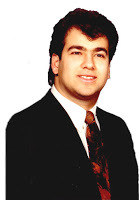 Lonnie Ostrow in 1992
Lonnie Ostrow in 1992In my senior year at Adelphi University, I was assigned to pen a screenplay for a class project. A song I had composed a year earlier - Poet Of The Wrong Generation - inspired me to write the fictional tale of an unlikely pop-star motivated by a tormented relationship. I managed to weave six of my original songs into the script. The assignment earned an "A" and visibly moved some of my classmates. And then I tucked away the pages in a drawer, more-or-less forgetting about it for the next decade.
In 1995 I stumbled upon a pop-culture phenomenon. One that would take me around the world, working with most of my boyhood heroes over the next seven years: The Living Legend Postal Salute.
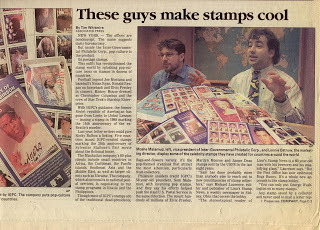 As director of PR, marketing and licensing for the world’s largest postal agency, it was my job to generate new excitement into the tired stamp-collecting hobby. Up till then, governments around the world had resisted in honoring living legends on legal tender for various concerns. Then along came Barbra Streisand. A Caribbean island (St. Vincent) agreed to honor the world famous singer/actress on a postage stamp, which would be unveiled at a concert in Las Vegas. And just like that the floodgates burst wide open. Before long, every celebrity-publicist, fan-club leader and talent-agent were lining up at our door, seeking to secure the next living icon to grace legal tender. I got to work with the likes of Sylvester Stallone, The Bee Gees, Bob Hope, Bob Dylan, Kirk Douglas, Jackie Chan, Elle Macpherson, David Copperfield, Hulk Hogan, Joe Montana, The Doors, NSYNC, Maya Angelou, Sidney Sheldon and Monty Python among others. It was an exhilarating, once-in-a-lifetime thrill-ride. I got to rub shoulders with some of the world’s most beloved entertainers and gain insight into their lives and personalities. One day I’d be presenting a stamp design to David Copperfield at his spectacular Manhattan penthouse. The next I’d be racing out to introduce Mario Andretti at the Nazareth Speedway. Not to mention the night I celebrated New Year’s Eve with Jackie Chan in the back of his yellow Lamborghini in Hong Kong.
As director of PR, marketing and licensing for the world’s largest postal agency, it was my job to generate new excitement into the tired stamp-collecting hobby. Up till then, governments around the world had resisted in honoring living legends on legal tender for various concerns. Then along came Barbra Streisand. A Caribbean island (St. Vincent) agreed to honor the world famous singer/actress on a postage stamp, which would be unveiled at a concert in Las Vegas. And just like that the floodgates burst wide open. Before long, every celebrity-publicist, fan-club leader and talent-agent were lining up at our door, seeking to secure the next living icon to grace legal tender. I got to work with the likes of Sylvester Stallone, The Bee Gees, Bob Hope, Bob Dylan, Kirk Douglas, Jackie Chan, Elle Macpherson, David Copperfield, Hulk Hogan, Joe Montana, The Doors, NSYNC, Maya Angelou, Sidney Sheldon and Monty Python among others. It was an exhilarating, once-in-a-lifetime thrill-ride. I got to rub shoulders with some of the world’s most beloved entertainers and gain insight into their lives and personalities. One day I’d be presenting a stamp design to David Copperfield at his spectacular Manhattan penthouse. The next I’d be racing out to introduce Mario Andretti at the Nazareth Speedway. Not to mention the night I celebrated New Year’s Eve with Jackie Chan in the back of his yellow Lamborghini in Hong Kong. Most of these projects culminated with high-profile “unveiling ceremonies” which I organized and hosted in cities around the globe. The publicity was staggering, much to the delight of the honored celebrities and the participating governments. Best of all, it helped put stamp-collecting back in the news with a positive vibe.
Most of these projects culminated with high-profile “unveiling ceremonies” which I organized and hosted in cities around the globe. The publicity was staggering, much to the delight of the honored celebrities and the participating governments. Best of all, it helped put stamp-collecting back in the news with a positive vibe.When the living postal tribute had run its course in 2001, I moved on to a boutique PR agency for a short, but memorable stint. My biggest splash was in December of that year: a Guinness World Record attempt to build the largest ever Lincoln Logs structure, marking the 75th anniversary of the classic construction toy.
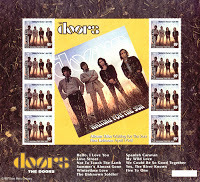 I became immersed in the publishing arena during my PR agency days. A postage stamp project I'd arranged with The Doors had led me to a freelance book publicity campaign for the band’s legendary keyboardist, Ray Manzarek. Now, I was asked to lead the book launch campaigns for a variety of first-time celebrity authors including Sandy Allen (the world’s tallest woman) and veteran TV actor, Buddy Ebsen (The Beverly Hillbillies). One year later, I took on a new career as the in-house marketing director, researcher and social media manager for the iconic bestselling novelist, Barbara T. Bradford. It is a position I have held for 14 years. There’s nothing quite like having a front-row seat to observe such an accomplished author work determinedly each year, creating yet another worldwide bestseller.
I became immersed in the publishing arena during my PR agency days. A postage stamp project I'd arranged with The Doors had led me to a freelance book publicity campaign for the band’s legendary keyboardist, Ray Manzarek. Now, I was asked to lead the book launch campaigns for a variety of first-time celebrity authors including Sandy Allen (the world’s tallest woman) and veteran TV actor, Buddy Ebsen (The Beverly Hillbillies). One year later, I took on a new career as the in-house marketing director, researcher and social media manager for the iconic bestselling novelist, Barbara T. Bradford. It is a position I have held for 14 years. There’s nothing quite like having a front-row seat to observe such an accomplished author work determinedly each year, creating yet another worldwide bestseller.It was during my early days at Bradford that I found the motivation to attempt my first novel. My skills had been kept sharp by writing feature articles for newspapers and magazines through the years. Now reading the prose of other authors convinced me that I too could write fiction successfully. All I needed was a good story to tell. That’s when I remembered the screenplay that brought tears to the eyes of my college classmates eleven years earlier. I dug up the dusty artifact from a desk-drawer, hoping to adapt this story into a full-length novel.
It took me four-months of all-night writing sessions to put the full story to paper. I was a new father back in those days and vividly recall my daughter, Amber, hiding out under my desk, seeking attention from her seriously distracted dad. The first draft was far from perfect, but still felt like a life-changing accomplishment. I’d even managed to seamlessly incorporate a dozen of my songs into this musical story. I shared it with family and friends, who touted me as the next Nicholas Sparks or Mitch Albom. Then reality set in.
Feedback from publishing industry contacts made me realize that I required an experienced editor. Someone who could point out where action should replace narrative summary, or where my dialog sounded anything but conversational. I was amazingly fortunate to have found Jeannette de Beauvoir, a tremendous writing coach and successful author in her own right. It took months of rewrites, cuts and polishing before we could call it publication-ready.
The balance of this roller-coaster ride is a potpourri of agent rejections, partial manuscript requests, constant tinkering, heartache, pep-talks from my wife and more query sendoffs. I would eventually land an agent who touted me as the next Erich Segal and predicted a six-figure advance. But an impasse was reached when our vision of adult fiction differed over the degree of “adult content.” And so it yet again was tucked away, unpublished… until now.
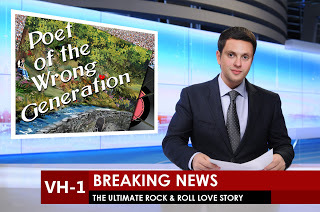 I’ve had a handful of offers in recent years to finally see the realization of my literary dream. Stubbornly, I held out for that perfect opportunity that always seemed within my grasp, yet just beyond the horizon. The demands of a career, raising two daughters and paying the mortgage always took priority. But then a brilliant cover design by my artist friend, Robert Sauber proved the ideal stimulus to jump-start the process. Then came an offer by a musical friend, Michael Nadata, to create a mini soundtrack by recording a pair of my original songs from the pages of the book. Harmony River Press presented the right publishing platform to promote my debut novel as the nostalgic, heart-string tugging, musical epic that I always envisioned this story to be. And here, finally, after a 14-year saga of real-life twists and turns, I am proud to share the fictional journey of Johnny Elias and his fable of stardom’s rewards: Poet Of The Wrong Generation. I greatly look forward to your feedback and reviews.
I’ve had a handful of offers in recent years to finally see the realization of my literary dream. Stubbornly, I held out for that perfect opportunity that always seemed within my grasp, yet just beyond the horizon. The demands of a career, raising two daughters and paying the mortgage always took priority. But then a brilliant cover design by my artist friend, Robert Sauber proved the ideal stimulus to jump-start the process. Then came an offer by a musical friend, Michael Nadata, to create a mini soundtrack by recording a pair of my original songs from the pages of the book. Harmony River Press presented the right publishing platform to promote my debut novel as the nostalgic, heart-string tugging, musical epic that I always envisioned this story to be. And here, finally, after a 14-year saga of real-life twists and turns, I am proud to share the fictional journey of Johnny Elias and his fable of stardom’s rewards: Poet Of The Wrong Generation. I greatly look forward to your feedback and reviews.Click HERE to Pre-Order Your Copy of Poet Of The Wrong Generation.

Published on October 10, 2016 12:45



